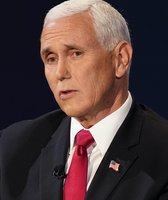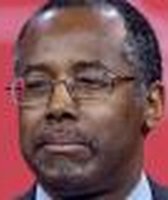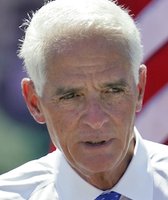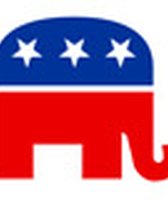Stand up for the facts!
Our only agenda is to publish the truth so you can be an informed participant in democracy.
We need your help.
I would like to contribute
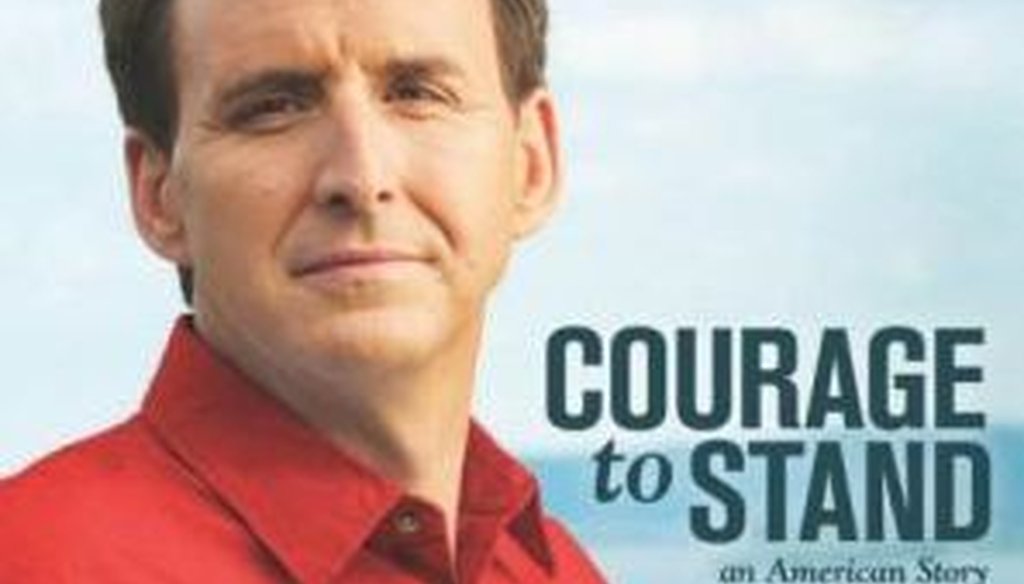
Tim Pawlenty is the former governor of Minnesota.
Tim Pawlenty loves hockey, Bruce Springsteen and Will Ferrell movies. Tim Pawlenty also loves politics, quoting the Bible and cutting taxes.
The former governor of Minnesota doesn’t have the name recognition of some of his potential competitors in the Republican primary for president, although he was the first major candidate to file paperwork with the Federal Election Commission for a possible run. So his book Courage to Stand: an American story focuses intently on painting a portrait of both a likeable everyman and a flinty-eyed conservative cost-cutter.
Pawlenty begins his story as the son of truck driver from South St. Paul, a place where people had good jobs at the meatpacking plants, grandmothers lived down the street, and kids got together after school for pick-up hockey games. Pawlenty writes that he learned the value of work early -- he recalls once having to help his father clean meat hooks after slaughter and throwing up from the stench.
When he was 16, his mother got a diagnosis of cancer. Her dying wish was for Tim to go to college. After considering becoming a dentist, Pawlenty became a political science major and volunteered for Republican candidates in Minnesota. He went to law school, worked as an attorney and ran for city council. That led to a seat in the state legislature and a stint as majority leader. In 2002, he entered the governor’s race and won, serving two terms as Minnesota’s chief executive.
Pawlenty emphasizes again and again his passion for limited government, reduced spending and tax cuts. He writes that he can’t ever remember not being conservative, even though he comes from a family of Democrats. "My desire to cut spending and reduce the size and role of government is not driven by polls or a series of check marks on a scorecard of how to win an election," Pawlenty writes. "I believed in my heart, my mind and my gut that Minnesotans had been led astray by liberal policies."
We checked several facts from Pawlenty’s claims about being a cost-cutter. He was right in some of the specifics, but several of his statements needed additional context.
• "From 1960, the year I was born, until the time I became Governor in 2003, the average two-year increase in Minnesota state spending was 21 percent. … we brought that down dramatically, to about 1.7 percent per year." We found that Pawlenty did cut spending, but some of his solutions included short-term budget fixes like the federal stimulus and spending delays for K-12 education. Spending forecasts increased as Pawlenty was leaving office.We rated his statement Half True.
• "In 2009, we cut state spending in real terms for the first time in 150 years." We found that Pawlenty did reduce spending for the two-year budget cycle for the first time since 1960. But there were several single-year decreases. Finally, there’s not 150 years of data available to check.
• "Every child born today inherits a $30,000 share in a national debt that stands at more than $13 trillion." With this statement, Pawlenty mixed two different standard measures of the national debt. But he’s mostly on track with his numbers, so we rated his statement Mostly True.
Pawlenty doesn’t reflect much on theories of public policy, even when it hits close to home. At one point, he writes poignantly about the closing of meatpacking plants in his hometown in the 1970s. Forty years after the companies packed up and left, people in South St. Paul still seemed dazed by the job losses. "When you think in terms of the importance work holds in people’s lives, how it shapes the choices people make about where and how they live, and combine it with the sense of loss that comes when a whole industry disappears, the loss is immeasurable," Pawlenty writes. But he stops short of assigning definitive causes for such structural economic change (he mentions almost in passing that the plants wanted to get away from powerful unions) or suggesting solutions.
Pawlenty mentions his wife Mary often in the book. The couple met in law school, and Mary Pawlenty pursued her own career as a county judge. They seem like a thoroughly modern family with kids, juggling schedules and commitments as they race through each day. The Pawlentys attend the evangelical megachurch Wooddale Church in Eden Prairie, and their longtime pastor, Leith Anderson, is president of the National Association of Evangelicals. Though raised Roman Catholic, Pawlenty writes that joining Wooddale was something that came naturally out of his spiritual journey and "to merge my faith and church life with Mary’s. … We never struggled over denomination or allegiance to a particular tradition."
In his book, Pawlenty regularly includes Bible verses that particularly inspired him along the way as he built his political career. The title, Courage to Stand, is a reference to the Book of Ezra, "Rise up; this matter is in your hands. We will support you, so take courage and do it." Still, he steers clear of contentious social issues, barely mentioning abortion and gay marriage. "Regardless of where people line up on these issues, nearly everyone appreciates and respects a constructive, respectful tone when these issues are discussed," Pawlenty writes. "I’m pro-life and in favor of traditional marriage, but when I talk about these issues, I watch my tone." At one point, he mentions a gay professor in law school he admired.
Strategically, Pawlenty uses the book to pre-empt potential attacks, giving his own side and setting the storyline for several controversies during his governorship. He says he now regrets a 75-cents-a-pack "health impact fee" on cigarettes, which he still insists was not a tax. He said he wasn’t careful enough to avoid appearing boastful after winning a budget battle with Democrats in the state legislature, noting, "A measure of grace is always essential." And he took the blame for his initial response in 2007 to the dramatic 35W bridge collapse, when he said inspectors hadn’t raised concerns about the bridge. It turned out they had.
"With that much history, that much complexity, and that much information yet to be sifted through, the answer should always be ‘We need to do a through review and gather all the facts,’ not, essentially, ‘My chief of staff just talked to some harried bureaucrat who assured us the bridge didn’t have any problems,’" Pawlenty writes. "It was bad information that added confusion to the situation rather than clarity. … a leader has to acquire the facts and take the time to get them right."
We fact-checked what Pawlenty said about the bridge investigation’s ultimate outcome, that the National Transportation Safety Board concluded that the collapse was "because of an original design flaw dating back to the 1960s." We found that was the most important factor the NTSB pointed to in its final report. But the NTSB did raise questions about the performance of state officials, particularly how detailed their inspections were and how they allowed contractors to place equipment on the bridge. We rated Pawlenty’s statement Mostly True.
On another controversial issue -- global warming -- Pawlenty's book is silent. Back in 2007, Pawlenty positioned himself as an environmental leader, suggesting aggressive reductions in greenhouse gases and a regional cap-and-trade plan. By 2009, he was calling a Democratic plan to curb climate change "overly bureaucratic, misguided" and "very burdensome on our economy." We rated his position on climate change a Full Flop.
Pawlenty saves his sharpest political attacks for his would-be political opponent, President Barack Obama. His criticisms resemble those made previously by fellow Republican Mitt Romney in his book No Apology: that Obama doesn’t think America is exceptional, that Obama won’t use the phrase "war on terror" and that Obama constantly apologizes for the United States.
We looked into whether Obama wouldn’t use the term "war on terror" back in 2009, when conservative pundit Sean Hannity said it. We found that Obama has deliberately avoided the phrase, saying he wanted to be more precise. We rated Hannity’s statement True. Not surprisingly, we came to the same conclusion about what Pawlenty said.
Pawlenty also said that Obama "readily apologizes for his country while ingratiating himself to our rivals and enemies." We exhaustively examined whether Obama has apologized or not when Romney made the charge last year. We concluded Obama has not apologized for the Untied States and rated it False.
But Pawlenty’s attacks are fairly limited; his book is hardly the full-throated attack on a political opponent like Romney’s No Apology was. It’s not a law professor-ish primer on policy positions, either, like Barack Obama’s The Audacity of Hope . And it doesn’t have the campaign trail scoops and score-settling digs of Sarah Palin’s Going Rogue.
Instead, Courage to Stand is largely an autobiographical story, telling where Pawlenty comes from and how he views his own political career. Voters will determine the next chapter.
Our Sources
Tim Pawlenty, Courage to Stand, 2010
See individual fact-checks for additional sources
























